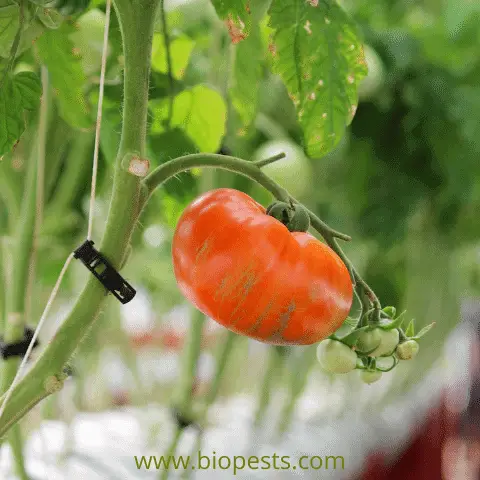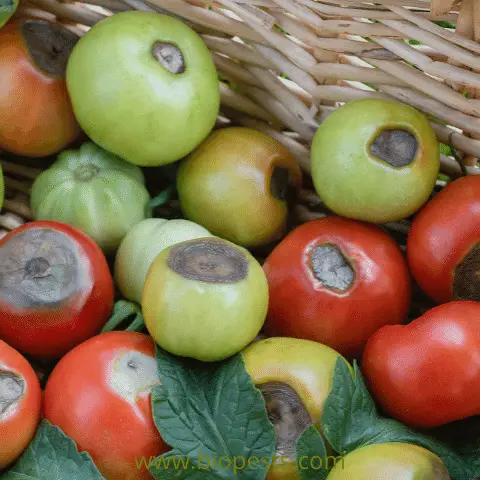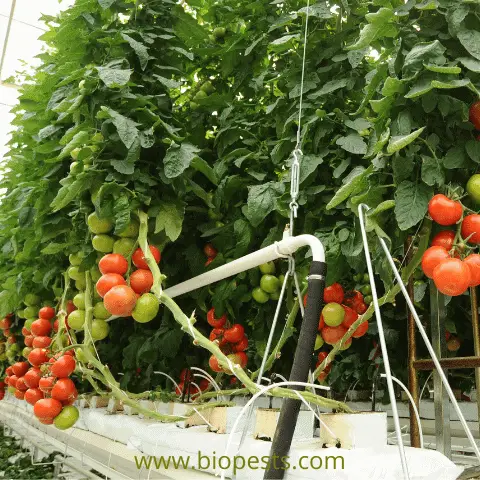When planning a vegetable garden for a hydroponic system, there are different factors that we need to take into consideration.
For instance, we need to remember that not all plants were made equal and they have different needs.
Tomato plants require a slightly different growing regime than other leafy vegetables. Their need for nutrients increases during their production stage and usually, they require more phosphorus and potassium. For this reason, it is best to plant tomatoes together with vegetables that have similar characteristics, stages of growth, and development.
Which Vegetables Can Be Plant Together With Tomatoes In Your Hydroponic System?
Tomatoes grow well together with peppers, hot peppers, cucumbers, basil, eggplant, melon, and squash.
Avoid growing tomatoes together with lettuce, cabbage, broccoli, and cauliflower.
If you don’t follow these rules, most likely you will end up having a very poor or damaged crop.
Problems Growing Tomatoes Hydroponically
It’s simple to grow tomatoes with hydroponic farming, however, it is not always easy.
These are some factors that can negatively affect your tomato plants:
- Temperature
- Light exposure
- Pollination
- Root Problems
- Nutrient Deficiency
- Inadequate Ph
- Inadequate Type of Hydroponic System
Let’s dive a little deeper into these subjects.

What is The Right Temperature For Growing Tomatoes Hydroponically
Temperature plays a very important role in the production of tomatoes. The optimum temperature is between 70to 80F during the day (21 to 26 degrees Celsius). At night temperature should never go below 60 F (15 degrees Celsius).
What is the Needed Light Exposure For Growing Tomatoes Hydroponically
Tomato plants love the heat, the sun, and tons of light. The plants need at least 6 hours of daylight per day. If you grow the plants indoors, you have control over the light intake and can increase the hours of exposure up to 16 hours of daylight a day.
LED grow lights are the best choice for hydroponic farming indoors. They have a longer life span than any other type of grow lighting and are way more efficient. The recommended watt coverage per square foot is between 50 to 80 watts.
Almost all LED grow lights are full-spectrum, meaning they emit wavelengths in the range of 380 to 779nm. This includes those wavelengths visible to the human eye (what we perceive as color) and the invisible wavelengths, like ultraviolet and infrared. These are the lights our plants need in all their stages of growth.
Here are some of the best LED grow lights available on Amazon, with a LED wattage that spans from 300 to 2000, depending on your needs and space.
Pollination Of Tomato Plants In Hydroponic System
In nature, bugs and wind help in the pollination process, however, if you are growing tomatoes indoors or in a greenhouse, you will need to manually pollinate your tomato flowers.
If you lack to do so, you can forget about the fruit.
As soon as you notice the flowers opening be prepared to either put a fan towards the plants, gently shake the flowers or manually brush them. Whatever you like, as long as those precious pollen grains end up on the right flower.
Tomato Root Problems In Hydroponic System
When the roots of your tomato plant are damaged the plant does not get the right amount of nutrients it needs and the plant will suffer or eventually die. One of the most common diseases related to tomato plants grown hydroponically is Blossom End Rot.
Blossom End Rot is a disease caused by a deficiency of calcium and a lack of aeration in the growth medium. This disease starts to form on the bottom of the fruit while it grows. Unfortunately, there is no way to cure it once you spot the disease on the fruit.

What Nutrients Hydroponic Tomato Plants need
Tomato plants are heavy feeders. When they begin flowering you need to increase their nutrient intake. If they don’t get the right amount of calcium, potassium, and magnesium they will develop all kinds of diseases such as Blossom end rot, Blossom drop, square and puffy fruit, or no fruit at all.
What is The Right PH for Growing Tomatoes Hydroponically
The optimal Ph for growing tomato plants should be between 5.5 to 6.5. Being that tomato plants love an acidic environment, a Ph closest to 6 is preferable.
Choose The Right Hydroponic System For Tomatoes
Not all hydroponics systems are compatible with growing tomatoes. An NFT system (Nutrient Film Technique) can be problematic since it is used mostly for small leafy vegetables with small root masses that mature much quicker. Tomatoes have big root masses that can obstruct the water/nutrient flow. Perhaps cherry tomatoes, that have smaller roots are a preferable cultivar for this system.
Some of the links above are affiliate links, meaning at no additional cost to you, I will earn a commission if you click through and make a purchase.

